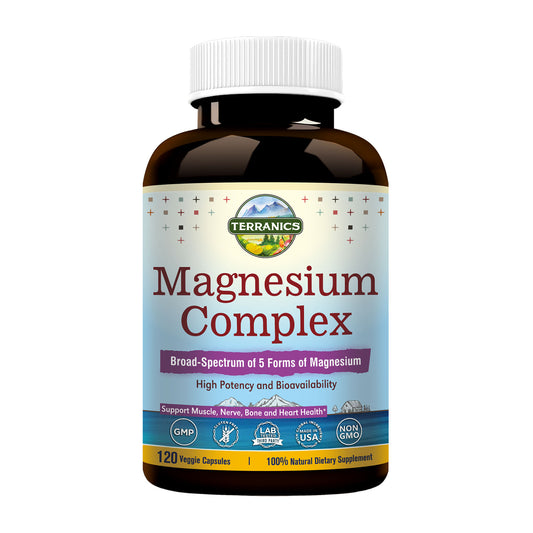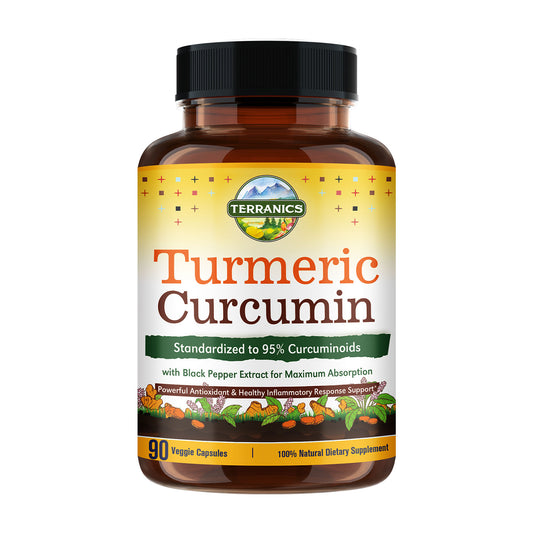
In recent years, the world has witnessed a significant shift towards healthier eating habits and the inclusion of plant-based foods in our diets. Among these rising stars is the humble garbanzo bean sprout. These tiny sprouts not only offer a delightful taste but are also packed with an array of essential nutrients. In this comprehensive blog post, we will delve into the numerous benefits of garbanzo bean sprouts and explore their versatility in various dishes. Get ready to unlock the full potential of these nutritional powerhouses!
What are Garbanzo Bean Sprouts?
Garbanzo bean sprouts, also known as chickpea sprouts, are the young shoots that emerge from garbanzo beans (also called chickpeas) when they are soaked and allowed to germinate. Sprouting is a process in which a seed begins to grow and develop into a young plant. In the case of garbanzo beans, the sprouting process involves soaking the beans in water for a certain period of time, usually overnight, until they begin to sprout.
During sprouting, the dormant garbanzo beans come to life as enzymes and nutrients within the beans become activated. These enzymes break down complex carbohydrates, proteins, and fats present in the beans into simpler forms that are more easily digestible. As a result, the nutritional content of the beans increases, and new nutrients are formed.
Garbanzo bean sprouts have a crisp texture and a slightly nutty flavor. They are commonly used in various cuisines around the world, particularly in Asian and Mediterranean dishes. These sprouts are highly versatile and can be eaten raw or cooked. They are often added to salads, stir-fries, sandwiches, wraps, soups, and stews to enhance both the taste and nutritional value of the dish.
In terms of nutrition, garbanzo bean sprouts are a powerhouse of essential nutrients. They are an excellent source of protein, dietary fiber, vitamins (such as vitamin C and vitamin A), and minerals (including potassium, iron, and magnesium). Additionally, garbanzo bean sprouts are low in calories and fat, making them a healthy choice for those seeking a nutrient-rich and low-calorie food option.
Overall, garbanzo bean sprouts offer a delicious and nutritious addition to meals, providing a range of health benefits and culinary possibilities. Whether you're looking to boost your protein intake, improve digestion, or simply explore new flavors, garbanzo bean sprouts are worth incorporating into your diet.
The Health Benefits of Garbanzo Bean Sprouts:

Digestive Health Boost:
Garbanzo bean sprouts are a fiber-rich food that promotes a healthy digestive system. The high fiber content helps regulate bowel movements and prevents constipation. Additionally, the soluble fiber in garbanzo bean sprouts acts as a prebiotic, providing nourishment for beneficial gut bacteria. This promotes a balanced gut microbiome and supports overall digestive health.
Sustainable Energy Source:
Thanks to their protein content, garbanzo bean sprouts serve as a sustainable source of energy. Protein is essential for muscle growth and repair, making garbanzo bean sprouts an excellent choice for athletes and individuals leading an active lifestyle. The combination of protein and complex carbohydrates in these sprouts provides a steady release of energy, helping to sustain physical activity and prevent energy crashes.
Heart-Healthy Properties:
Garbanzo bean sprouts offer several components that contribute to heart health. Potassium, a mineral found in these sprouts, helps regulate blood pressure by counteracting the effects of sodium. By maintaining healthy blood pressure levels, garbanzo bean sprouts reduce the risk of cardiovascular diseases such as heart attacks and strokes. Moreover, the presence of folate in garbanzo bean sprouts supports heart health by reducing levels of homocysteine, an amino acid associated with an increased risk of heart disease.
Blood Sugar Management:
Garbanzo bean sprouts have a low glycemic index, which means they have a minimal impact on blood sugar levels. This makes them suitable for individuals with diabetes or those aiming to control their blood sugar levels. The combination of fiber, protein, and complex carbohydrates in garbanzo bean sprouts helps regulate the absorption of glucose, preventing spikes and crashes in blood sugar levels. Incorporating garbanzo bean sprouts into meals can contribute to better glycemic control and overall blood sugar management.
Diverse Culinary Applications:

Garbanzo bean sprouts can be incorporated into an array of dishes, adding both nutrition and flavor. Here are some creative ideas to inspire you:
Vibrant Salads:
Garbanzo bean sprouts add a delightful crunch and nutty flavor to vibrant salads. Combine them with an assortment of fresh vegetables like cucumbers, cherry tomatoes, bell peppers, and leafy greens. Top it off with some aromatic herbs like cilantro or mint for an extra burst of freshness. Drizzle with a zesty dressing, such as lemon vinaigrette or tahini dressing, to complement the flavors. Garbanzo bean sprouts not only enhance the texture of salads but also contribute a nutritional boost, adding protein, fiber, and various vitamins and minerals.
Stir-Fry Sensations:
When it comes to stir-fries, garbanzo bean sprouts are a versatile ingredient that can take your dish to the next level. Their crisp texture holds up well during cooking, adding a satisfying crunch to the stir-fry. Pair garbanzo bean sprouts with an array of vegetables like carrots, broccoli, snow peas, and mushrooms. For added flavor, incorporate garlic, ginger, and soy sauce or your favorite stir-fry sauce. The garbanzo bean sprouts will absorb the savory flavors of the dish while providing an extra dose of fiber and protein.
Wholesome Sandwiches and Wraps:
Elevate your sandwiches and wraps with the addition of garbanzo bean sprouts. These sprouts bring a fresh and crunchy element to your creations, enhancing both the texture and nutritional value. Combine garbanzo bean sprouts with your favorite fillings, such as sliced turkey, avocado, tomatoes, and lettuce. For a vegetarian option, try hummus, roasted vegetables, and feta cheese. The garbanzo bean sprouts not only provide a satisfying bite but also contribute protein, fiber, and a range of vitamins and minerals.
Hearty Soups and Stews:
Garbanzo bean sprouts can be a wonderful addition to hearty soups and stews, adding both nutrition and texture. Towards the end of the cooking process, stir in a handful of garbanzo bean sprouts to infuse the dish with their unique flavors. They will retain their crunch while absorbing the flavors of the broth. Whether you're making a vegetable soup, chili, or a curry, garbanzo bean sprouts offer a delightful textural contrast and contribute additional protein and fiber to your meal.
Sprouting Garbanzo Beans at Home:

Sprouting garbanzo beans at home is a simple and rewarding process that allows you to enjoy the freshness and nutritional benefits of these sprouts right in your own kitchen. Here's a step-by-step guide to sprouting garbanzo beans:
Start with high-quality garbanzo beans:
Choose organic, raw garbanzo beans to ensure the best results. You can find them at health food stores or online.
Rinse the beans:
Place the garbanzo beans in a colander or sieve and rinse them thoroughly under running water to remove any dirt or debris.
Soak the beans:
Transfer the rinsed garbanzo beans to a large bowl or container and cover them with plenty of water. Allow them to soak for about 8 to 12 hours or overnight. The beans will absorb water and begin the germination process.
Drain and rinse:
After the soaking period, drain the water from the beans and give them another thorough rinse under running water.
Sprouting setup:
Choose a sprouting method that suits your preference. One common method is to place the soaked beans in a sprouting jar or a wide-mouthed glass jar covered with a mesh or cheesecloth secured with a rubber band. This allows airflow while preventing the beans from falling out.
Sprouting process:
Place the jar in an inclined position to allow any excess water to drain. Rinse the beans with water 2 to 3 times a day. After each rinse, drain out the water completely to prevent the beans from sitting in moisture.
Patience and observation:
Depending on the temperature and humidity, garbanzo beans typically take around 2 to 4 days to sprout. During this time, observe the sprouts and ensure they are rinsed and drained regularly. The sprouts are ready to harvest when they reach your desired length, usually about 1/4 to 1/2 inch.
Storage:
Once the garbanzo bean sprouts have reached the desired length, give them a final rinse and drain. Store them in an airtight container in the refrigerator, where they can stay fresh for up to a week.
Conclusion
Garbanzo bean sprouts are not just a passing food fad; they are a nutritional powerhouse deserving of a prominent place in our diets. From their protein-rich composition to their digestive health benefits and beyond, these sprouts offer a well-rounded package of goodness. Experiment with various recipes, savor the unique flavors, and witness the positive impact on your overall well-being.
Remember to consult with healthcare professionals before making significant dietary changes, especially if you have specific dietary restrictions or medical conditions. Embrace the journey of exploring new flavors, nourishing your body, and reaping the rewards of these mighty garbanzo bean sprouts. Your taste buds and your health will thank you!




